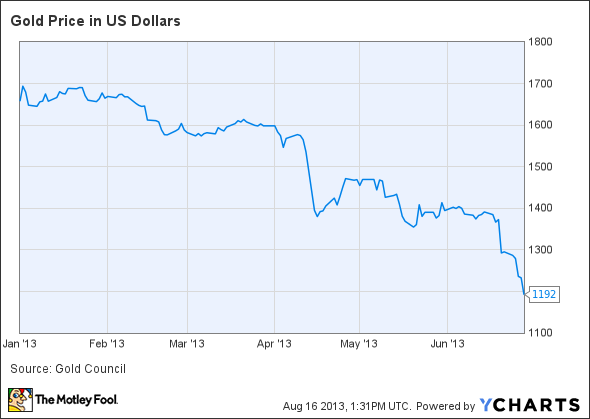Although we don't believe in timing the market or panicking over daily movements, we do like to keep an eye on market changes -- just in case they're material to our investing thesis.
U.S. stocks are relatively flat this morning, with the S&P 500 (^GSPC +0.13%) up less than a point and the narrower, price-weighted Dow Jones Industrial Average (^DJI +0.16%) up 20 points as of 10:05 a.m. EDT.
As I was looking for some context to try to understand this morning's malaise (often a waste of time, but for a financial writer, it's an occupational hazard), I came across the following headline from Reuters: "U.S. housing starts, permits rise in July but below forecasts."
That doesn't sound good, until you wade into the data:
The Commerce Department said on Friday that housing starts increased 5.9 percent [in July] to a seasonally adjusted annual rate of 896,000 units. ... Economists polled by Reuters had expected groundbreaking to rise to a 900,000-unit rate last month.
Permits to build homes rose 2.7 percent in July to a 943,000-unit pace. Economists had expected permits to rise to a 945,000 unit pace.
Here's a tip for decoding the headlines of financial news articles: In this context, forecasts that are 4,000 and 2,000 units off the actual figures are dead on, statistically speaking -- the error is less than 0.5%. Consider, for example that the latest report also contained an upward revision of June housing starts by 10,000 units. Reuters would have been better off going with the following headline this morning: "U.S. housing starts, permits rise in July, in line with forecasts."
That sounds better than the previous one, doesn't it? It's less alarming and, more importantly, closer to the truth.
Gold's second-quarter plunge: Supply trumped demand
If you've been wondering why gold performed so disastrously last quarter (see the following graph of gold prices over the first half of the year), you have your answer.
Gold Price in US Dollars data by YCharts.
We've just passed the deadline for investment managers to file their 13F forms detailing their public security holdings at the end of the second quarter. As such, we now know that billionaire hedge fund manager John Paulson reduced his firm's stake in the SPDR Gold Shares (GLD +0.61%) by half during this period. With a 10.2 million share position at the end of June, Paulson & Co. likely remains the gold fund's largest shareholder.
Mr. Paulson wasn't alone in selling shares of a gold ETF. Soros Fund Management and hedge fund manager Third Point, led by Dan Loeb, closed their positions in the SPDR Gold Shares. In fact, the World Gold Council said yesterday that global demand for gold fell to a four-year low in the second quarter on record exchange-traded product sales and less central-bank buying.
World Gold Council Managing director Marcus Grubb even announced, "We feel that speculative money has largely come out of the gold market."
Does this exodus mean that the gold rally can now resume on a sounder footing? On a short-term basis, perhaps. And in fact, maybe it already has: Gold has bounced rather tidily off its end-of-June price. On a longer-term basis, however, investors can expect the correction in gold prices to continue.

